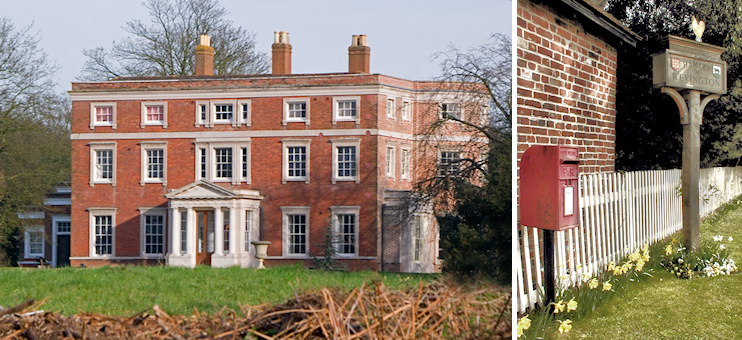Kevington
Kevington, Bromley
Although situated just a mile to the south-east of urban St Mary Cray, Kevington (also spelt Kevingtown) is a rural hamlet, with farms, nurseries and old cottages

The name may come from Old English words meaning ‘place on a small hill’ or it may have related to a landowner named Cyfa. The Ordnance Survey map of 1876 shows Kevingtown and Kevington as two separate places – the former at the top of the hill, the latter on its western slope – but this could have been the consequence of some cartographic confusion.
The manor of Kevington was in the hands of the related Manning and Onslow families from the late Middle Ages to the mid-18th century, when Middleton Onslow sold it to Herman Behrens (or Berens), a City merchant from Amsterdam who commissioned the construction of Kevington Hall (c.1767–9), which is shown in the photograph above.*
Completed in 1769, the house is – at least in part – the work of Sir Robert Taylor, who was also responsible for Danson House and for the enlargement of the Bank of England. Behrens imported the building materials from around Europe: the red clinker bricks came from Amsterdam, tiles from Heidelberg and marble from Livorno.
Behrens’s descendants held the property until the Second World War, when the government requisitioned it to accommodate Canadian troops. Afterwards, Kent county council used the hall as a primary school until the early 1980s.
Now privately owned, Kevington Hall has been diligently restored and is sometimes for private functions available for conducted group tours by arrangement. It’s sometimes opened to the public as one of the delights of the Open House London weekend.
Next door to Kevington Hall, Shawcroft special school was designed by Sir Roger Walters of the GLC architects’ department and built in 1974 in a woodland setting. Shawcroft is now Kent House – a commercially run hospital and school that cares for and educates young people (aged 12–18) who have behavioural or psychological difficulties.
The hamlet lacks any amenities for residents or visitors and the former Kevington Arms (as it was in the 17th century) is now a pricy house called Blueberry Farm.
Postcode area: Orpington, BR5
